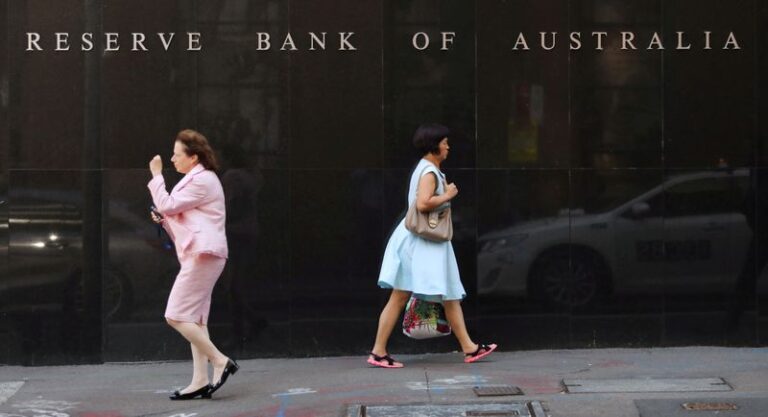
SYDNEY, Feb 16 (Reuters) – Australia’s central bank believes it will take a significant and sustained tightening in the labour market to lift inflation to more comfortable levels, a tough task that could take years to achieve.
Minutes of the Reserve Bank of Australia’s (RBA) February policy meeting released on Tuesday showed the Board recognised that wage growth had been too subdued for years before the pandemic imposed its own restraints on pay.
Firms had responded to the global uncertainty by delaying wage hikes or freezing wages, and the bank’s liaison suggested it would be some time before such freezes ended.
Government had also responded by limiting public sector pay raises, a trend that could take some time to reverse given rapidly rising borrowing loads.
“A sustained period of labour market tightness would be needed to generate the faster wage growth required to see inflation return to the 2 to 3% target range,” the Board agreed.
The RBA’s own forecast is that underlying inflation will not even reach 2% by the middle of 2023, a major reason it does not expect to start raising interest rates until 2024 at the earliest.
Rates were slashed to a record low of 0.1% last year as part of a major monetary and fiscal stimulus plan that saw the economy revive much quicker than first feared.
House prices have swung sharply higher across the country and home construction is booming, helping push unemployment down to 6.6% in December from a peak of 7.5%.
Yet the RBA has estimated the jobless rate would need to fall to 4.5% or lower to truly get wages growing again.
The central bank this month also doubled the amount of government bonds it intended to buy to A$200 billion and extended the plan to October.
The RBA estimated its purchases so far had kept 10-year bond yields 30 basis points lower than they otherwise would have been and put downward pressure on borrowing costs across the economy.
It had also held the Australian dollar “noticeably” lower than it would have been given other major central banks were conducting massive bond purchases of their own.
The RBA Board recognised that holding rates so low could lead to increasing borrowing and rising asset prices, particularly for housing.
“The Board concluded there were greater benefits for financial stability from a stronger economy, while acknowledging the importance of closely monitoring risks in asset markets,” the minutes showed.





